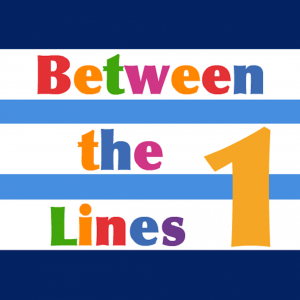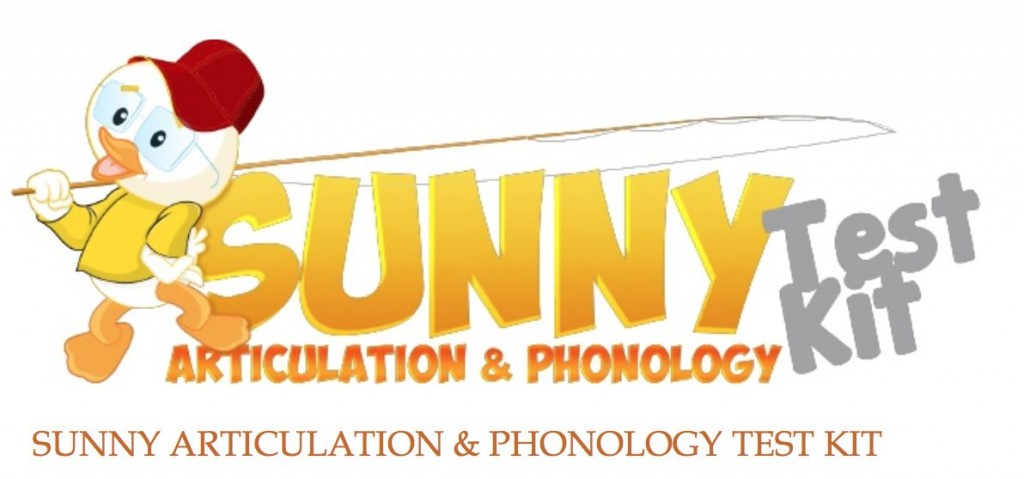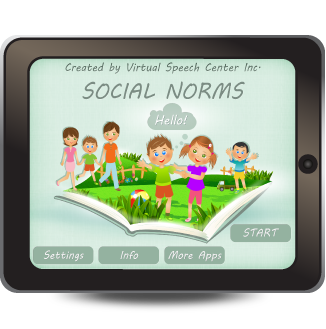 In mid-2014, I purchased the Clinical Evaluation of Language Fundamentals®, Fifth Edition Metalinguistics (CELF®-5 Metalinguistics), which is a revision of the Test of Language Competence–Expanded.
In mid-2014, I purchased the Clinical Evaluation of Language Fundamentals®, Fifth Edition Metalinguistics (CELF®-5 Metalinguistics), which is a revision of the Test of Language Competence–Expanded.
Basic overview
Release date: 2014
Age Range: 9-21
Author: Elizabeth Wiig and Wayne Secord
Publisher: Pearson
Description: According to the manual CELF–5M was created to “identify students 9-21 years old who have not acquired the expected levels of communicative competence and metalinguistic ability for their age” (pg. 1). In other words the test targets higher level language skills beyond the basic vocabulary and grammar knowledge and use. The authors recommend using this test with students with “subtle language disorders” or “those on the autism spectrum”.
The test contains 5 subtests:
The Metalinguistics Profile subtest of the CELF-5:M is a questionnaire (filled out by caregiver or teacher) which targets three areas: Words, Concepts, and Multiple Meanings; Inferences and Predictions; as well as Conversational Knowledge and Use. Its aim is to obtain information about a student’s metalinguistic skills in everyday educational and social contexts to complement the evidence of metalinguistic strengths and weaknesses identified by the other subtests that comprise the CELF-5:M test battery.
Questions address such topics as the child’s comprehension of idioms and abstract language, their predicting and inferencing abilities, their ability to deal with unpleasant situations, participate in group discussions, as well as understand jokes and sarcasm, just to name a few. A maximum of four points can be obtained on each of it 30 questions. The following is the rating criteria: a score of one is obtained when a child ‘never’ does something in a particular category (e.g., doesn’t get the punchline of jokes). A score of two is given when a child is capable of understanding or using something ‘some of the time’. A score of three is given when a child is able to understand or perform something ‘often’. Finally, a score of four is given when a child is capable of comprehending something ‘always’ or ‘almost always’.
A word of caution, when giving this profile to either teachers or parents to fill out, the SLP must ensure that no overinflation or underestimation of scores takes place. Frequently, some parents may not have a clear understanding of the extent of their child’s level of deficits. Similarly, some teachers, especially those who may not know the child very well, or those who have worked with a child for a very short period of time, may overinflate the scores when filling out the questionnaire. However, the opposite may also occur. A small group of parents may underestimate their children’s abilities, and provide poor scores as a result also not providing an objective picture of the child’s level of deficits. In such situations, the best option may be for the SLP to fill out the questionnaire together with the parent or teacher in order to provide explanations of questions in a different categories.
The Making Inferences subtest of the CELF-5:M evaluates the student’s ability to identify and formulate logical inferences on the basis of existing causal relationships presented in short narrative texts. The student is visually and auditorily presented with a particular situation by the examiner. S/he is then asked to identify the best two out of four written answers for the ending and come up with her own additional reason other than the ones listed in the stimulus book.
On the multiple choice portion of the subtest errors can result due to provision of contradictory, unrelated and irrelevant responses. On the open ended questions portion of the subtest errors can result due to vague, confusing, incomplete, unlikely or illogical responses as well as due to contradictory and off topic answers.
I must say that this is my least favorite subtest. Here’s why. In real life students are not provided with multiple choices when asked to make predictions or inferences. That is why I do not believe that performance on this subtest is a true representation of the child’s ability in this area.
The Conversational Skills subtest of the CELF-5:M evaluates the student’s ability to initiate a conversation or respond in a way that is relevant and pragmatically appropriate to the context and audience while incorporating given words in semantically and syntactically correct sentences. S/he are presented with a picture scene that creates a conversational context and two or three words which are also printed above the pictured scene. S/he are then asked to formulate a conversationally and pragmatically appropriate sentence for the given context using all of the target words in the form (tense, number, etc.) provided.
 Errors on this subtest can result due to pragmatic, semantic or syntactic errors. With respect to pragmatics errors can result due to illogical, nonsensical, vague or incomplete sentences as well as due to sentence formulation which does not take into account presented scenes. With respect to semantics errors can result due to missing or misused target words as well as due to vague, incorrect or misused verbiage. With respect to syntax errors can result due to use of sentence fragments, morphological misuse of target words (changing word forms) as well as syntact deviations on non-target words.
Errors on this subtest can result due to pragmatic, semantic or syntactic errors. With respect to pragmatics errors can result due to illogical, nonsensical, vague or incomplete sentences as well as due to sentence formulation which does not take into account presented scenes. With respect to semantics errors can result due to missing or misused target words as well as due to vague, incorrect or misused verbiage. With respect to syntax errors can result due to use of sentence fragments, morphological misuse of target words (changing word forms) as well as syntact deviations on non-target words.
The Multiple Meanings subtest of the CELF-5:M evaluates the student’s ability to recognize and interpret different meanings of selected lexical (word level) and structural (sentence level) ambiguities. S/he are presented a sentence (orally and in text) that contained an ambiguity at either the word or sentence level. S/he are then asked to describe two meanings for each presented sentence.
Errors can result due to difficulty interpreting lexical and structural ambiguities as well as due to an inability to provide more than one interpretation to presented multiple meaning words.
The Figurative Language subtest of the CELF-5:M evaluates the student’s ability to interpret figurative expressions (idioms) within a given context and match each expression with another figurative expression of similar meaning given verbal and written support.
Errors on this subtest can result due to difficulty explaining the meanings of idiomatic expressions, as well as due to difficulty selecting the appropriate meaning from visually provided multiple choice answers containing related idiomatic expressions.
Based on testing the following long-term goal can be generated:
LTG: Student will improve his/her metalinguistic abilities (thinking about language) for academic and social purposes
It can also yield the following short-term goals
- Student will improve ability to make social inferences with an without written support
- Student will improve ability to to make social predictions with and without written support
- Student will produce (choose one/all: syntactically, semantically, pragmatically) appropriate compound and complex sentences with and without visual support
- Student will improve ability to explain context embedded multiple meaning words
- Student will improve ability to explain ambiguously worded language
- Student will improve ability to explain figurative language and idiomatic expressions
A word of caution regarding testing eligibility:
 What I am concerned about:
What I am concerned about:
- It is rather costly with a sticker price of $376, which is far above other tests assessing similar abilities on the market.
- Test administration begins at 9 years of age. However, metalinguistic abilities develop in children much earlier than nine years of age. Children and young as 6 years of age can present with glaring metalinguistic deficits but unless the examiner has access to another testing which could assess the children’s metalinguistic abilities we have to wait until the child is nine and is clearly behind his or her peers in their metalinguistic development in order to confirm the presence of deficits.
- I also don’t understand the presence of visual and written stimuli on select testing subtests. Children are not provided with multiple-choice answers or written support in daily social and academic situations. As a result of the presence of these aids score overinflation may occur with those children who do well given compensatory strategies but who have difficulty generating novel spontaneous responses.
- Similarly, I am concerned that higher functioning yet socially clueless students may be administered this test because the examiners may believe that it would accurately assess their higher functioning social pragmatic language abilities. However many higher functioning students will pass this test with flying colors, which is why I urge considerable caution when selecting student population for testing administration
- Very Important: See the sensitivity and specificity details of CELF-5M above.
Consequently the CELF-5: M administration is not for everyone. As mentioned before I would only administer portions of this test to higher functioning (but not too high functioning) students undergoing language assessment for the first time or to higher functioning students receiving a re-evaluation, who have previously passed the Clinical Evaluation of Language Fundamentals-5 with ease. This test would not be appropriate for Severely Challenged and Challenged Social Communicators (see Winner, 2015)
I would also not administer this test to the following populations:
- Students with intellectual disabilities
- Students with severe language impairment and limited vocabulary inventories
- English Language Learners (ELL) with suspected language deficits
- Students from low SES backgrounds*
I would not administer the CELF-5:M to the latter two groups of students due to significantly increased potential for linguistic and cultural bias stemming from lack of previous knowledge and exposure to popular culture as well as idiomatic expressions.

I would also not administer this test to Nuance Challenged Social Communicators (Winner, 2015). Specifically to Socially Anxious and Weak Interactive Social Communicators (Winner, 2015). These are the students with average or above average verbal language abilities most of whom did not have language delays when they were young. They have a ‘well-developed social radar’ and they’re highly aware of other people feelings and thoughts. However they have difficulties navigating subtle social cues of others. As a result this particular group of students tends to score quite on metalinguistic and social pragmatic testing of reduced complexity yet still present with pervasive social pragmatic language deficits.
Consequently, Clinical Assessment of Pragmatics (CAPs) administration would better suit their needs.
What I do like about this test:
This test allows me to identify more subtle language-based difficulties in verbal children with average to high average intelligence (or Emerging Social Communicators as per Winner, 2015) who present with metalinguistic and social pragmatic language weaknesses in the following areas:
- Social predicting and inferencing
- Conversational rules and breakdown repairs
- Knowledge of high-level and abstract vocabulary words
- Identification and usage of ambiguous and figurative language
- Coherent and cohesive discourse and narrative formulation
- Knowledge and use of multiple meaning words in a variety of conversational and text-embedded contexts
Overall, this is an nice test to have in your assessment toolkit. Consequently,if SLPs exercise caution in test candidate selection they can obtain very useful information for metalinguistic and social pragmatic language treatment goal purposes.
NEW: Need a CELF-5M Template Report? Find it HERE
3-1-19 Update: Since this review was written in October 2014, I have reviewed other tests, including the Clinical Assessment of Pragmatics (CAPs), which can be substituted and effectively used to delve into metalinguistic abilities of students with social communication difficulties. As such, while I still use the Multiple Meanings and the Figurative Language subtests of the CELF-5M rather frequently due to its suitability for a select number of students that I assess, given its described limitations, I would approach its purchase with caution, if it were the only test to be owned by the therapist for the purpose of assessment (it’s perfectly suitable as part of a battery but not as a standalone and only option).
Helpful Resources Related to Social Pragmatic Language Overview, Assessment and Remediation:
Disclaimer: The views expressed in this post are the personal opinion of the author. The author is not affiliated with Pearson in any way and was not provided by them with any complimentary products or compensation for the review of this product.
 Today I am very excited to participate along with 27 other talented SLPs in the For the Love of Speech Blog Hop. I love being an SLP, and to spread that love around from February 1-4 I am giving away a Valentine’s Day Product: “The Origins of Valentine’s Day: At thematic language activity packet for middle and high school students” .
Today I am very excited to participate along with 27 other talented SLPs in the For the Love of Speech Blog Hop. I love being an SLP, and to spread that love around from February 1-4 I am giving away a Valentine’s Day Product: “The Origins of Valentine’s Day: At thematic language activity packet for middle and high school students” . 




 It’s on the tip of my tongue! How many times have you used this expression or heard it from other people. Oftentimes when we think of word-finding deficits we automatically think of it as an adult affliction, however, you would be surprised how many children including even very young children (4+ years of age) are affected by it. Did you know that “
It’s on the tip of my tongue! How many times have you used this expression or heard it from other people. Oftentimes when we think of word-finding deficits we automatically think of it as an adult affliction, however, you would be surprised how many children including even very young children (4+ years of age) are affected by it. Did you know that “ In mid-2014, I purchased the
In mid-2014, I purchased the  Errors on this subtest can result due to pragmatic, semantic or syntactic errors. With respect to pragmatics errors can result due to illogical, nonsensical, vague or incomplete sentences as well as due to sentence formulation which does not take into account presented scenes. With respect to semantics errors can result due to missing or misused target words as well as due to vague, incorrect or misused verbiage. With respect to syntax errors can result due to use of sentence fragments, morphological misuse of target words (changing word forms) as well as syntact deviations on non-target words.
Errors on this subtest can result due to pragmatic, semantic or syntactic errors. With respect to pragmatics errors can result due to illogical, nonsensical, vague or incomplete sentences as well as due to sentence formulation which does not take into account presented scenes. With respect to semantics errors can result due to missing or misused target words as well as due to vague, incorrect or misused verbiage. With respect to syntax errors can result due to use of sentence fragments, morphological misuse of target words (changing word forms) as well as syntact deviations on non-target words. What I am concerned about:
What I am concerned about: 
 Today I am very excited to introduce my new product “
Today I am very excited to introduce my new product “ The DSM-5 was released in May 2013 and with it came a revision of criteria for the diagnosis and classification of many psychiatric
The DSM-5 was released in May 2013 and with it came a revision of criteria for the diagnosis and classification of many psychiatric  Recently, I’ve participated in various on-line and in-person discussions with both school-based speech language pathologists (SLPs) as well as medical health professionals (e.g., neurologists, pediatricians, etc.) regarding their views on the need of formal diagnosis for school aged children with suspected alcohol related deficits. While their responses differed considerably from: “
Recently, I’ve participated in various on-line and in-person discussions with both school-based speech language pathologists (SLPs) as well as medical health professionals (e.g., neurologists, pediatricians, etc.) regarding their views on the need of formal diagnosis for school aged children with suspected alcohol related deficits. While their responses differed considerably from: “ Those of you who follow my blog know that I absolutely adore the “Between the Lines” app series by Hamaguchi apps, which focuses on targeting aspects of social language including tone of voice and non-verbal body language, perspective taking as well as idiom interpretation. I have already reviewed
Those of you who follow my blog know that I absolutely adore the “Between the Lines” app series by Hamaguchi apps, which focuses on targeting aspects of social language including tone of voice and non-verbal body language, perspective taking as well as idiom interpretation. I have already reviewed  In February 2013 I did a review of the
In February 2013 I did a review of the  Today I am reviewing “Social Norms” a brand new app developed by the Virtual Speech Center to improve social skills in children with autism spectrum disorders.
Today I am reviewing “Social Norms” a brand new app developed by the Virtual Speech Center to improve social skills in children with autism spectrum disorders.